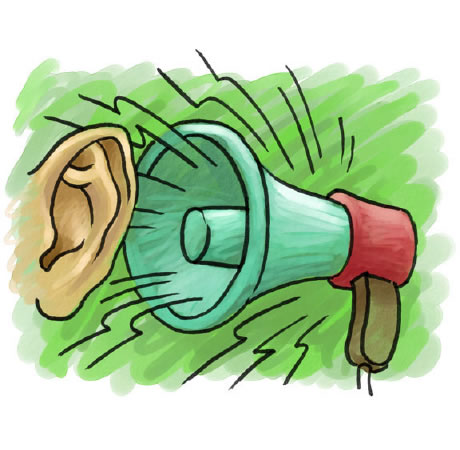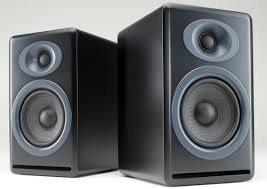
Thank you Drs Baning and Osei for speaking up.
It is my belief that the extremely high levels of unlawful, illegal and insane noise in Ghana is seriously contributing to and probably causing much of, if not the majority of, mental ailments in the country. This relentless and horrific noise is forced upon the populace day and night while the Police, the KMA and EPA mostly do nothing to abate it.
I notice Police and other vehicles bearing signage of “Operation Calm Life” and they drive past extreme noise and no action is taken. When my wife and I have gone to Police to complain about noise we were told that they would have to find a law against it. I have found a number of laws in the Criminal Code to deal with noisemakers and also one or two that criminalizes the failure to prevent harm. Noise does cause harm and noise does kill people!
To be blunt, Police, the KMA and EPA are more prone to protecting the noisemakers rather than enforcing the laws and regulations which are in place to stop noise perpetrators. It very much seems to me that the ridiculous, unlawful, illegal and insane levels of noise in Ghana and those who cause it and those who refuse to stop it are absolutely responsible for much of the mental and physical ailments of those who live in n Ghana.
How churches and preachers, merchants, information centres, bars and others can continue their evil and wicked noise assaults both day and night on both human and animal health is to me beyond comprehension and perhaps an indicator of a mental illness itself. How the police, KMA and EPA remain unwilling and / or unable to enforce the laws and regulations is an indictment of their failure of duty, and a failure of their humanity.
Shame, shame, shame on all those who cause harm and to those who allow it to continue and especially to those who do not take action to protect children and babies from noise that can kill, maim and stifle a child’s learning.
Peter Cunningham
Below are some “Brain Facts” about noise:
Noise Pollution Isn’t Just Annoying — It’s Bad for Your Health
Published 27 Jun 2018
Author Knvul Sheikh
Source BrainFacts/SfN

In urban areas, noise is unavoidable. Chronic noise keeps the body’s stress response system constantly activated, contributing to mood disturbances and poor cardiovascular health. As the city-dwelling population is expected to grow in the next few decades, more and more people may experience the harmful consequences of noise pollution.
There’s no escaping the hum of traffic. In the Bridge Apartments, a cluster of four high-rise buildings straddling Interstate 95 in Manhattan, the rumble of cars and trucks driving by is so loud people have to raise their voices to talk. Even on the eighth floor, the noise level can be around 66 decibels — just less than a running vacuum.
In the 1970s, a team of psychologists discovered that children living on the lower, noisier floors had a hard time distinguishing similar words, such as “thick” and “sick.” They also had more difficulty reading than kids who lived on higher floors.
“In those conditions, noise may be masking opportunities to learn language,” says Jenny Saffran, a developmental psychologist at the University of Wisconsin Madison. By mimicking urban environments like the Bridge Apartments in her lab, Saffran has shown that background noise not only impairs children’s ability to recognize familiar words, it also prevents toddlers from mastering new ones.
“When noise reaches a certain level, you can no longer perceive important stimuli in your environment, like people talking to you, or your attention is drawn away from these important stimuli by other acoustic signals,” she says.
The consequences of the constant urban rumble extend beyond childhood. Numerous studies have linked noise pollution to increased anxiety, depression, high blood pressure, heart disease, and stroke.
Even small increases in unwanted ambient sound have significant effects. In 2011, for example, scientists studying people living near seven major European airports found that a 10-decibel increase in aircraft noise was associated with a 28 percent increase in anxiety medication use. Another study found that people living in areas with more road traffic noise were 25 percent more likely than those living in quieter neighborhoods to have symptoms of depression. Similarly, people exposed to noise pollution were found to be significantly more likely to have heart problems like atrial fibrillation compared to those unaffected by noise.
Researchers suspect that noise aggravates these health conditions by inducing higher levels of stress, says Thomas Münzel, a cardiologist at the Johannes Gutenberg University in Mainz, Germany. “When you experience noise in the middle of the night, you have an awakening reaction,” Münzel says. “You can close your eyes but you cannot close your ears.”
Whether it’s the hum of an always-on TV, the beeping of hospital equipment, the honking of cars, or the window-rattling noise of airplanes overhead, noise triggers the brain’s “fight or flight” response, Münzel says.
When someone experiences a stressful noise, the amygdala, an area of the brain that contributes to emotional processing, sends a distress signal to the hypothalamus. The hypothalamus immediately signals the adrenal glands to pump adrenaline into the bloodstream — an evolutionary measure to react rapidly in life-threatening situations.
Adrenaline and another stress hormone called cortisol bring on physiological changes, including a spike in heart rate and blood pressure. “Your body reacts so fast; you often can’t tell these changes happened,” Münzel says.
But chronic exposure to noise keeps this stress response activated continuously. Eventually, it starts to wear the body down, causing mental and physical health problems.
In 2013, Münzel and his colleagues simulated the detrimental effects of nighttime noise in a study of 75 healthy adults. The participants listened to recordings containing varying amounts of aircraft noise while they slept at home. Participants slept worse on the night they heard the most noise, and what’s more, lab tests conducted the next morning showed they had more vascular damage and inflammation and higher levels of stress hormones.
As the population grows, the number of people living in noisy urban areas will also increase, making up an ever-larger share of the population — the United Nations estimates that, by 2030, 60 percent of the world will live in cities, up from 54 percent in 2016. But there are ways to combat excessive urban noise, including changing aircraft routes, building road and railway barriers to reduce the level of noise that reaches nearby communities, using quieter hybrid and electric cars, and installing thicker insulation in homes and offices. Saffran says that big-picture solutions could go a long way in providing relief from the constant clamor around us.
ABOUT THE AUTHOR
Knvul Sheikh is a freelance science journalist based in New York. She writes about psychology, personalized medicine, technology and culture. Her byline has appeared in publications such as The Atlantic, Genome Magazine, Popular Science, Scholastic, Scientific American, and Vice.





